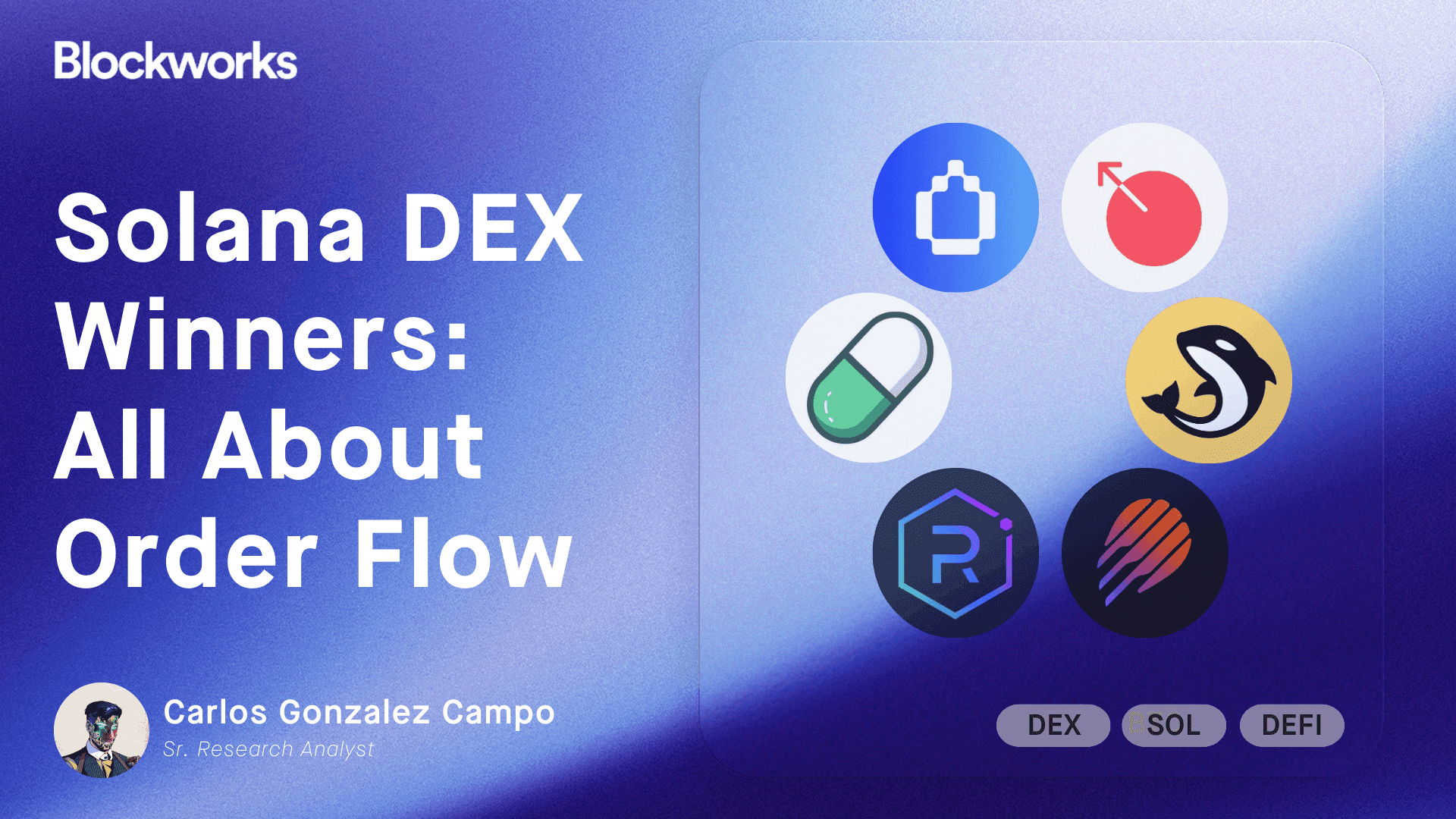Sanctum is primed to add Binance, Bitget, Bybit as partners
Plus, Solana’s validators are seeing their revenue sources change during this Solana cycle

JarTee/Shutterstock modified by Blockworks
Today, enjoy the Lightspeed newsletter on Blockworks.co. Tomorrow, get the news delivered directly to your inbox. Subscribe to the Lightspeed newsletter.
Sanctum primed to onboard Binance, Bitget, Bybit, and others
Crypto exchanges Binance, Bitget, and ByBit are all partnering with Sanctum to launch Solana liquid staking tokens (LSTs), a source with direct knowledge of the matter confirmed to Blockworks.
The three centralized exchanges (CEXs) all teased Solana LSTs on X yesterday within hours of each other — naming the tokens BNSOL, bbSOL, and BGSOL. Sanctum ignited the partnership rumors by cryptically replying to two of the posts from its X account. Sanctum co-founder FP Lee also sort-of-confirmed the partnership in a post of his own.
Binance in particular represents quite a coup for Sanctum, which helps launch and aggregate Solana LSTs. LSTs tokenize a claim to some amount of staked Solana, meaning users can hold a liquid token while also accruing staking rewards.
Binance custodies nearly 33 million SOL for customers, worth over $4 billion at current prices, according to the company’s proof of reserves. It’s not clear how much of that is staked. Bybit’s proof of reserves show some 2.6 million Solana, and Bitget’s doesn’t list SOL.
Bybit’s bbSOL was added to Sanctum’s LST list on GitHub last week. Binance and Bitget’s tokens are not yet on the list.
Tokens that launch on Sanctum get access to the platform’s reserve and router, which essentially means access to the deep liquidity created by hosting several LSTs on one platform. Sanctum Verified Partners can also join INF, which is arguably Sanctum’s flagship product — a token offering the average staking yield of a basket of LSTs.
The source close to the matter also said that LST partnerships with two other centralized exchanges are in the works, but they declined to name which ones. Coinbase did not return a request for comment on if the exchange has plans to launch a Solana LST.
Reading the tea leaves a bit, it sounds like Sanctum may be taking a blanket approach to pitching centralized exchanges in hopes of landing these Solana LST partnerships. Centralization concerns aside, exchanges continue to be among crypto’s most-used consumer applications, and their distribution is massive by crypto standards.
Lee predicted on X that CEX LSTs would bring in “millions” of new users. “I’m especially happy that instead of building their own gated solutions, CEXes are adopting open-source, decentralized, community-owned programs instead,” Lee added.
Sanctum makes money on deposit and swap fees, an anonymous co-founder who goes by j told me. J added that Sanctum is presently more focused on growing the LST market than on ginning up revenue, as its infrastructure is already primed to capture fee revenue once the pie grows larger.
Despite the best efforts of Sanctum and other LST providers like Jito, Marinade, Jupiter, and Blaze, the percentage of staked Solana held in LSTs has been stagnant at between 6% and 7% since early May, according to a Dune dashboard. If every SOL staker on Binance were to suddenly have the option to convert to an LST however, perhaps that figure would budge.
— Jack Kubinec
Zero In
Solana’s validators are seeing their revenue sources change during this Solana cycle:

Since the blockchain’s founding, validator revenue used to be nearly entirely derived from issuance, which is a reward paid to validators at the end of each Solana epoch out of inflation of the SOL token supply.
In this chart, which was brought to my attention by 21 co’s Tom Wan on X, that’s shifted in recent months amid a memecoin and DeFi explosion on the network. Today, issuance only makes up 92% of validator revenue, though that figure ducked under 80% on certain days this summer.
This lines up with an increase in transaction fees and maximal extractible value (MEV), which presumably comes from fees paid on Jito bundles.
— Jack Kubinec
The Pulse
ICYMI this week:
- Robinhood: The Solana network is now live on Robinhood Wallet, allowing users to self-custody Solana tokens and send/receive over the Solana blockchain.
- Coinbase: Helius is now powering Solana support on Coinbase Wallet.
- PYUSD: Solana has become the primary home for PYUSD, holding a 64% market share compared to Ethereum’s 36%. Much of this growth has been driven by boosted rewards on the DeFi platform Kamino.
- Jupiter Exchange: Jupiter Exchange now integrates both pump.fun and moonshot by dexscreener, allowing users to buy and sell new tokens instantly.
- Helium Mobile: Decentralized wireless network services have launched in Puerto Rico, marking a significant expansion of Solana-based infrastructure.
- Mango DAO: The DAO is navigating complex governance challenges following its 2022 hack.
- Blockworks Research: We recently released a new Solana dashboard, tracking key metrics like TEV, validator cash flow, and transaction activity.
— Jeffrey Albus
One Good DM
A message from Andrew Thurman, contributor to the Jito Foundation:

Get the news in your inbox. Explore Blockworks newsletters:
- The Breakdown: Decoding crypto and the markets. Daily.
- 0xResearch: Alpha in your inbox. Think like an analyst.






